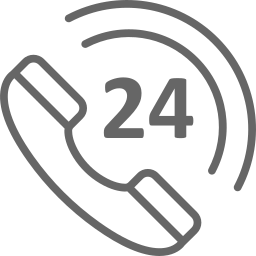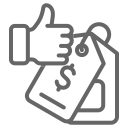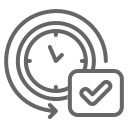Reason for Referral The case study that’s will be discussed in this report it's about Ms Amna is a 21-year-old female who lives with her parents and four brothers, who is self-referred for excessive mobile phone use. Amna studies Bachelor of Psychology at the University of Western Sydney. The amount of usage has almost doubled in five years her. This shall be the first time that she will be consulted for this issue of hers.
Behaviour Description According to the client, Amna has reported has been spending so much time on a phone over lasts 4 years, however, she indicated that the behaviour has only become problematic in the last 12 months after she broke up with her boyfriend’s overseas. She met someone in Australia and she liked him, but he doesn’t have the same feeling for her and recently found that’s he is in a relationship with a friend of hers. Amna estimates that’s she only used her phone one to three hours a day when she started on the social media but now, she can be spending 9 to 12 hours a day. Amna explained that the problem behaviour is exacerbated during periods of intense stress, such as the university exam period and during a negative mental state where Amna is working long hours. Amna says she uses her phone everywhere, after waking-up, before going to bed, while studying,
while listening to music, and at night where she puts on something to watch so she can go to sleep. Due to the circumstances of the world of the lockdown, the COVID-19 she has been spending more time on the phone which is leading the client is facing sleep issues. Spending too much time on your cellphone before bed can make it harder to fall asleep because of the blue lights that emit from mobile. She feels unhappiness mostly and also stated that’s she always check his profile and her friend profile. This makes her feel upset, less confident, and cannot deal with rejection. Furthermore, Amna after she broke up from a long-distance relationship, she felt lonely and started gaining weight. She shares this with her friend who also belongs to the same country from where she is. They have the same story and often spending time talking about how hard to be in a long-distance relationship, which is a catalyst to her ongoing behaviour. Especially after everything at university been done online due to the pandemic, she has felt that she needs help to be back to her normal life. She is aware of her abnormal behaviour feels guilty that she is not able to fix it as she is too damaged to repair herself.
Today, people are facing many problems regarding cell phones, and today it became a major issue to be discussed. People out there are suffering from many disorders. When people spent most of their time on social media or playing games, they don't interact with their families. The client has been using her phone too much due to the environments factors and the
problem that has happened to her all at once. This behaviour occurred from the past 12 months due to her break up. She was so attached to him that she used to wake up all night just to talk to him. On the other hand, this guy did not like her but wanted her friend instead. She felt heart-broken as her friend knew that she liked him but she didn't consider that. This resulted in her being less confident.
About the environmental factors, she misses on her family events quite often and hence checks on them through her phone. She is worried about her family due to the conflict in her country. This is an explanation of the fact why she finds solace in using her phone. It makes her happy on being updated on what is happening with her family and friends. But lately, she wants to change this because she is not feeling herself. Her over-usage of the phone makes her less motivated to study or exercise. This leads her poor self-management which impacts her work. Her peers seem to make this phenomenon of hers a very rare thing. Amna wants to change herself when she sees others who are happy in their lives and not involved in social media. She wants to be happy as before and not feel guilty using her phone and get her confidence back. This becomes a big issue as one who wants to change don’t know how to change (Shoukat, 2019).
The main aim is to assist Amna on a schedule. This can be done by turning off the notification on her phone and as per circumstances also switch off her phone. It will her goal to use her phone for 3-4 hours a day for a week.
Based on the client description, the case of the problem it is likely to be caused by the environment’s factors and issues with her life. Depending on cell phones can also cause frustration, irritation, and edginess when they cannot be used (Shoukat, 2019). Extreme use of cell phones can lead to poor sleep and those people who have their mobile in their bedroom sleep for very shorter periods. Client needs to focus on the time management strategies as stated by (Uddin, Baig & Minhas 2018). It is important to keep a balance.
Excessive usage of mobile phone use is now often associated with potentially harmful and disturbing behaviour. There are a negative impact on various aspects of daily life, for instance, work interference and relationship problems. Excessive mobile use has generally been considered as a behavioural addiction that shares similar features with those of drug addictions. The current research shows the legitimacy of behavioural addiction. This may lead to a lack of studies. This shows neuro-biological similarities between mobile phone addiction and other types of sincere addictive behaviours (Billieux, Pierre, Lopez-Fernandez, & Griffith, 2015). The positive aspect of Amna is that she seeks help. It is suggested to try to communicate face to face instead of talking to someone online. For example her parents or one of her brothers or friends to improve her social skills. Amna needs to face her problems
such as accept the fact of rejection and also to move on from her boyfriends. Every morning, when she wakes up, needs to write a positive quote to start her day with all the goals that want to be achieved. She can use her phone for 10min in the morning by setting an alarm but not to view any negative news and check anyone’s profile. They indicated that programming the behaviour by self-praising could be an effective way of dealing with the problem. For example, rewarding herself with a shopping spree after she controlled her phone usage. This leads to motivation to achieve her goals. If she fails, she shall be prohibited to use her phone for the rest of the day. On the other side, the researchers said people shall face time management issues. Most of the tools like the internet and social sites destroy an individual (Janna Stephens & Allen, 2014). A study conducted by Chernyak (2020) used classical conditioning principles to reduce the usage of phones by individuals. Using principles of extinction, people were regularly exposed to care more about the social media inducing stimuli without being allowed to use their phone; the results indicated a significant reduction in cue-based self-control of the individual over the intervention.
Meredith researched to explore the gain in weight due to the overuse of cell phones (Lepore, 2019). Adults often eat while using phones, which increases weight. Spending abundant time utilizing the smartphone simplifies inactive performance, reduces the period of bodily action, which enhances the danger of premature death, cancer, heart attacks, and diabetes. The adults often fell asleep while using the phone and after eating and this results in weight gain. This is relatable with Amna. Remedy for this is, Amna needs to set a time when she can use her phone. It shall control her usage and allow her to manage her time to help her achieve her daily goals.
The research design that will be used to structure the collection of data and examine the interventions include a single baseline (Yu, Lee, Cao, & Lan, 2019). This design is sensitive to the designs of groups and person organism dissimilarities. The design for Amna will be based on her management time. She will have a sheet for seven days where she will record her daily task and what she has achieved and how much time she spends on the phone by checking on her screen time. Her time will be tracked using an apply app which is useful if she uses her phone more than the prescribed time. That amount shall be deducted from her next day usage. The sheet task will help her avoiding using her phone. This treatment will help her organize her daily task and he herself shall observe the difference.
The tools that will be used to measure the behaviour include tracking sheets. The behavioural data will be collected and recorded in these sheets. Information such as time, date, antecedent behaviour and consequence of behaviour will be included by writing all the things she does and achieves in a day. The duration in which the adults use mobile phones will be mentioned and according to this, its effects will be listed on the tracking sheet (Leaf, Ferguson,
Milne, & Cihon, 2020). It is also decided to use the paper sheet to measure the over usage of mobile phones and to organize the collection of data.
The baseline measurement of over usage of cell phones was commenced on 28th August 2020, and it runs for one to two weeks and these interventions result in fruitful consequences. The dates for the baseline section of the collection of data was from 1st September 2020 to 7th September 2020. The interventions for this behavioural issue include individual therapy sessions, motivational meetings, physical activities (games), and an appropriate schedule for using the phone.
The average time spent on using the phone during the weekly baseline period was about 5 hours and it decreased to about 1.5 hours during intervention week. Moreover, the client starts muting the notification and also kick off the cell phone. This recommends that intervention was successful in bringing the change in behaviour.
The interventions were implemented through planning, carrying out the intervention, and monitoring the intervention (Ross, et al., 2018). Various strategies were included in interventions to produce the desired alteration. The intervention plan can be improved by bringing positive changes such as using the best tools for collecting the data and analyzing the solutions for the problems. The tools that are easy to use and do not cause any issues are best for intervention planning.
Billieux, J., Lopez-Fernandez, O., & Griffith, D. J. (2015). Can Disordered Mobile Phone Use Be Considered a Behavioral Addiction? An Update on Current Evidence and a Comprehensive Model for Future Research. Current Addiction Reports, 2(2), 156-162. 10.1007/s40429-015-0054-y
Chang, S. M., & Lin, S. S. (2019). Online gaming motive profiles in late adolescence and the related longitudinal development of stress, depression, and problematic internet use. Computers & Education, 123-137. Computers & Education: https://www.sciencedirect.com/science/article/pii/S0360131519300260
Stephens, J., & Allen, J. (2014). Mobile Phone Interventions to Increase Physical Activity and Reduce Weight. HHS Public Access, 28(4), 320-329. https://www.ncbi.nlm.nih.gov/pmc/articles/PMC3681804/
Leaf, J. B., Ferguson, J. L., Milne, C., & Cihon, J. H. (2020). Social Behavior for Individuals with Intellectual Disabilities and Dual Diagnosis: Common Deficits and Assessment Tools. Handbook of Dual Diagnosis, 411-427. http://link-springer-com-443.webvpn.fjmu.edu.cn/chapter/10.1007%2F978-3-030-46835-4_25
Lepore, M. (2019, April 12). A new study finds that your phone is making you gain weight. https://www.theladders.com/career-advice/new-study-finds-that-your-phone-is-making-you-gain-weight
Morland, L. A., Niehaus, J., Taft, C., Marx, B. P., Menez, U., & Mackintosh, M. A. (2016). Using a mobile application in the management of anger problems among veterans: a pilot study. Military medicine, 990-995. https://academic.oup.com/milmed/article-abstract/181/9/990/4159827
Ross, J., Stevenson, F., Dack, C., Pal, K., May, C., Michie, S., & Murray, E. (2018). Developing an implementation strategy for a digital health intervention: an example in routine healthcare. BMC health services research, 21-41. https://link.springer.com/article/10.1186/s12913-018-3615-7
Shoukat, S. (2019). Cell phone addiction and psychological and physiological health in adolescents. EXCLI Journal Experimental and Clinical Sciences, 47-50.
Yu, H., Lee, H., Cao, N., & Lan, Y. (2019). The optimal baseline design for multi-baseline InSAR phase unwrapping. IEEE Transactions on Geoscience and Remote Sensing, 5738-5750. https://ieeexplore.ieee.org/abstract/document/8678716/
Uddin, I., Baig, A., & Minhas, A. A. (2018). A controlled environment model for dealing with smartphone addiction. International Journal of Advanced Computer Science and Applications, 9(9), 10-14569. 10.14569/IJACSA.2018.090973
Remember, at the center of any academic work, lies clarity and evidence. Should you need further assistance, do look up to our Psychology Assignment Help
You Might Also Like
How to write a Psychology essay?
How to Write a Psychology Assignment?

Get 24x7 instant assistance whenever you need.

Get affordable prices for your every assignment.

Assure you to deliver the assignment before the deadline

Get Plagiarism and AI content free Assignment

Get direct communication with experts immediately.
Secure Your Assignments
Just $10
Pay the rest on delivery*

It's Time To Find The Right Expert to Prepare Your Assignment!
Do not let assignment submission deadlines stress you out. Explore our professional assignment writing services with competitive rates today!
Secure Your Assignment!